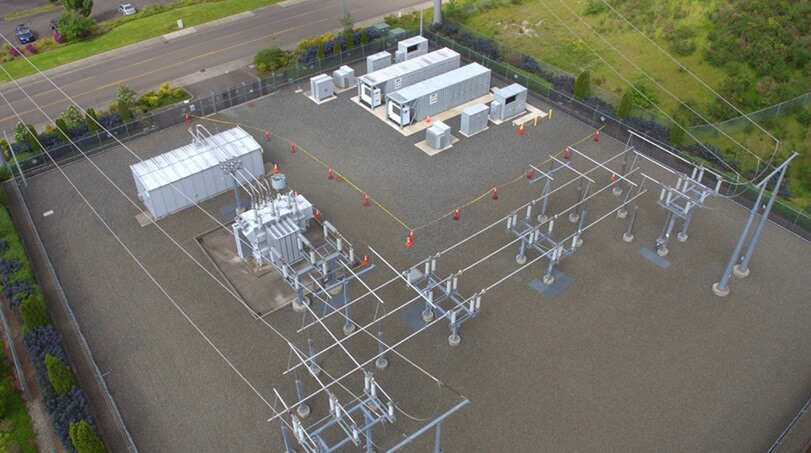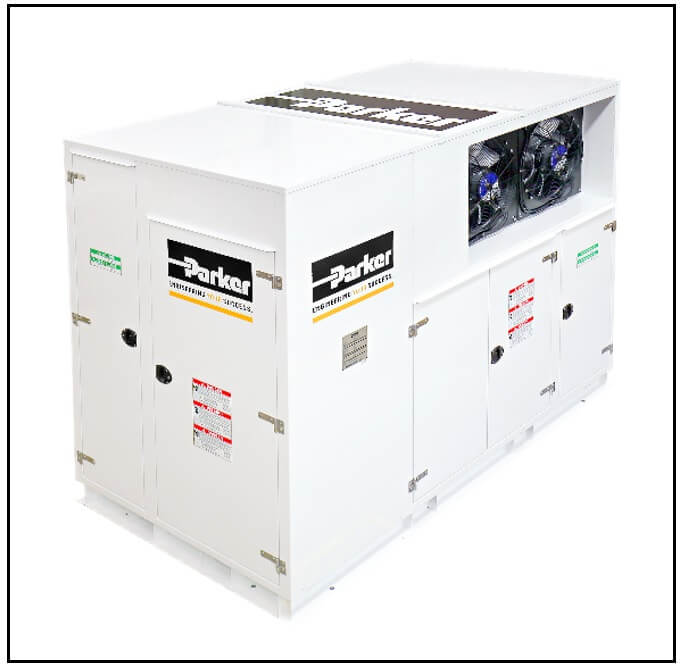Daniel Friberg / Division Engineering Manager / Parker Hannifin, Global Energy Grid Tie Division / Vice Chair, Board of Directors / MESA Standards Alliance
Developing international standards is vitally important to the growth of grid-scale energy storage systems. These systems can make it possible to feed power to the grid so that production need not be scaled up and down repeatedly to adjust to changing demand levels. They also absorb the over-generation from wind and solar-power facilities and release that power when needed. The MESA (Modular Energy Storage Architecture) Standards Alliance is an industry group of dozens of equipment vendors and utilities working together to grow the energy storage industry by developing an open, non-proprietary set of specifications and standards. Our goal is to accelerate interoperability, scalability, safety, quality, availability, and affordability in energy storage components and systems.

The Snohomish County PUD’s Hardeson substation includes the MESA 1A and 1B pilot projects (upper center of photo).
This standardization effort has two main aspects. The first is a software control platform that allows all equipment from different vendors to talk the same “language,” so that when one piece of equipment sends a command or transmits data, it is received and interpreted correctly by the intended recipient.
The second aspect is ensuring that the hardware that makes up an energy storage system (ESS)—the batteries, power converters, metering system, and the energy management system (EMS) − can be intelligently “plugged into” each other and the electrical system.
In turn, the ESS must be intelligently plugged into the utility’s existing information and operations technology. Without established standards, components and systems will come with proprietary connectors, and the process of plugging them together becomes a laborious task repeated for each new project, which will add to project cost and lead time.
The MESA Standards Alliance is currently providing two specifications:
- MESA-ESS is designed to let electric utilities or grid operators scale deployment of energy storage and manage energy storage assets and fleets of multi-vendor assets to meet specific needs and use cases with minimal custom engineering
- MESA-Device Specifications and SunSpec Energy Storage Model address how energy storage components within an energy-storage system communicate with each other and its operational components.

The Parker Hannifin 890GT-B 2 MW outdoor bidirectional power conversion system (PCS) converts ac grid power to dc to charge the batteries, and when necessary, inverts the battery power to ac to feed the grid.
In 2013, a number of the companies and organizations that would go on to become founding members of the MESA Standards Alliance began work on a series of pilot projects intended to demonstrate how the plug-and-play approach being developed would allow quickly commissioning new energy storage systems.
Their first energy storage project, MESA 1A, was a 1 MW, 500 kWh lithium-ion battery system installed at the Snohomish County Public Utility District’s Hardeson substation in Everett, Washington. Mitsubishi International supplied the lithium-ion (Li-ion) battery modules to Parker Hannifin’s Energy Grid Tie division, which supplied the power inverter and battery system housing.
The battery modules contain 2,880 battery cells manufactured by Lithium Energy Japan, a joint venture between GS Yuasa International Ltd. and Mitsubishi. 1Energy Systems LLC (now part of Doosan GridTech) developed the system control software and supplied systems integration services.
The 1 MW, 500-kWh MESA 1B project, installed immediately next to the 1A system also involved Parker Hannifin, which provided a MESA-compliant 890GT-B power conversion system; LG Chem Ltd. provided the lithium-ion battery, and Alstom Grid made its e-Terra control center software platforms MESA-compatible. Faculty from the University of Washington, who provided research expertise in electric power systems and computer science.
Based on the experience from these two projects, our company has implemented a MESA-Device compliant communications interface that is now standard in the 890 GT-B Power Conversion System (PCS) product line. The MESA interface has successfully been used in Parker-supplied PCSs with over 100 MW currently operating around the world.
The organizations that make up the MESA Standards Alliance share these objectives:
- Standardize communication and connections, which will accelerate interoperability and scalability of energy storage systems.
- Give electric utilities more choices by enabling multi-vendor, component-based energy storage systems.
- Reduce project-specific engineering costs, enabling a more robust energy storage market.
- Enable technology suppliers (from software developers to battery suppliers) to focus on their core competencies in producing quality, safe and cost-effective components.
- Reduce training costs and improve safety for field staff through standardization procedures for safety and efficiency.
- Expedite the development and industry deployment of storage-specific communication specifications, before submitting them to appropriate Standards Development Organizations (SDO).
Interest and acceptance of the MESA standards are expanding within the industry. “We are excited that MESA’s mission, to develop open, non-proprietary communication standards for grid-scale energy storage is gaining momentum,” says Margot Malarkey, program manager, MESA Standards Alliance. “The organization has tripled in membership since its founding in 2014, and currently has over 30 members with representation from all stakeholders in the energy storage industry including battery suppliers, energy-management system suppliers, power-conversion system suppliers, and utilities and IPPs. Through standardization, MESA let’s industry vendors focus on proprietary innovation and enable that innovation to come together at lower costs by reducing project-specific engineering. Parker Hannifin has a history working with energy storage systems. As a Founding Member of MESA, Parker was an early advocate for the importance of standards to accelerate the growth of the energy storage industry and has been instrumental in driving the efforts to the point where we are today.”
For more on the MESA Standards Alliance or participate in the technical working groups that are developing these industry standards, visit www.mesastandards.org
Filed Under: Energy storage, News




